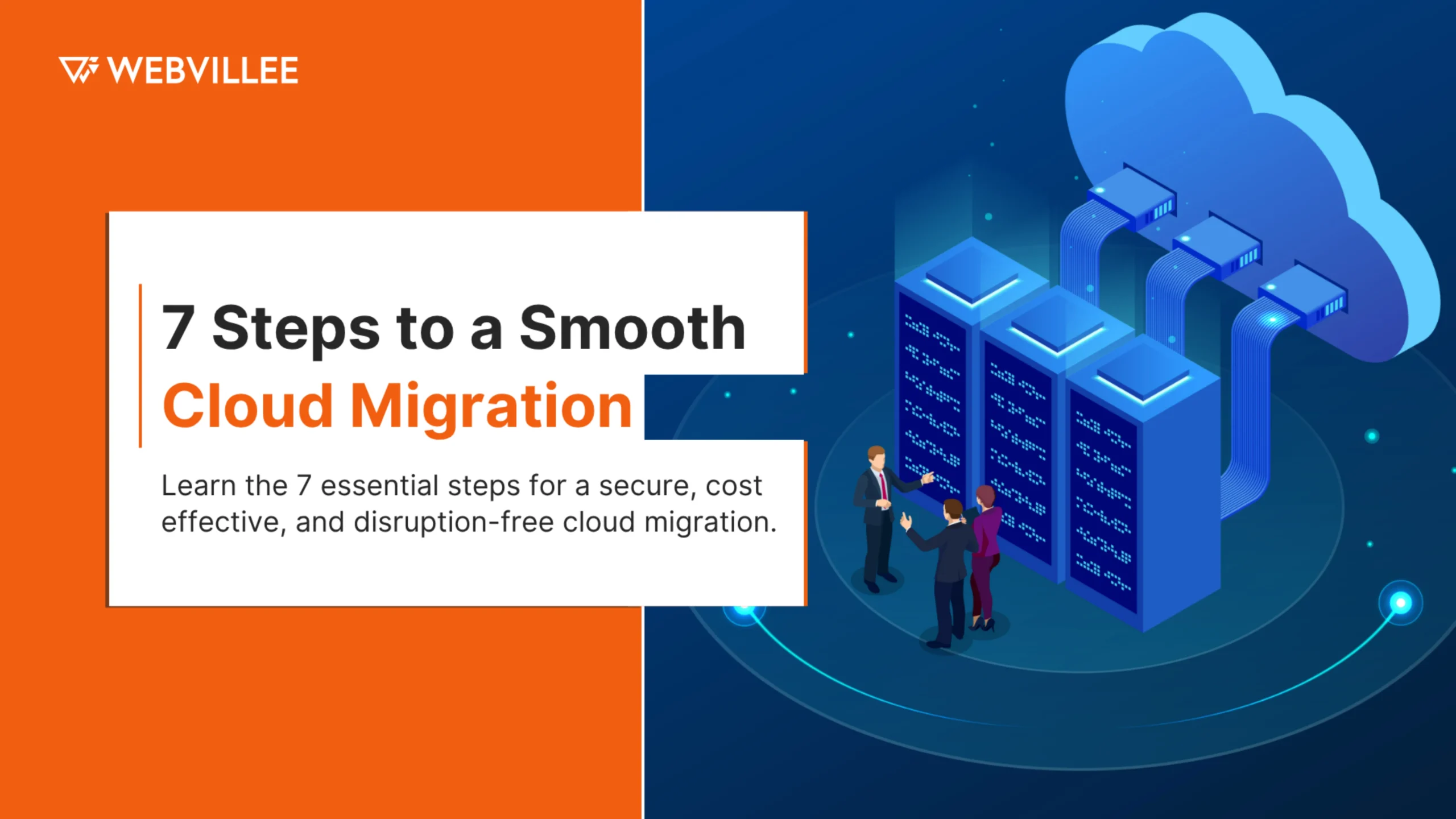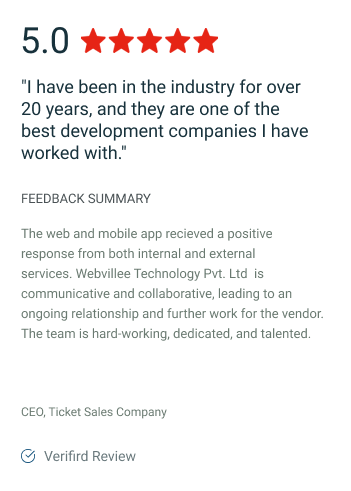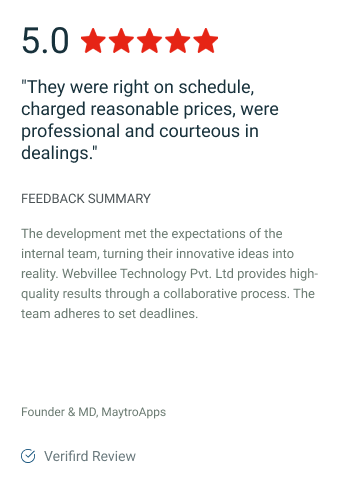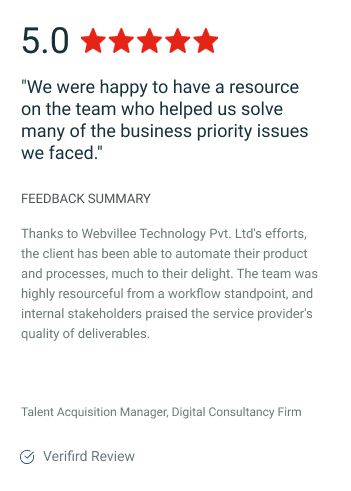A successful cloud migration in 2025 goes beyond moving data from on-premise servers. It is about reshaping how your organization delivers value, responds to market needs, and supports future growth in a connected world.
Modern cloud strategies demand more than just technical execution. They require aligning your architecture with business priorities, building flexibility into your operations, and reducing time to scale.
Whether you are considering a phased migration or a full transition, the goal is long-term adaptability, not just short-term gains. With the right cloud solutions in place, you can build a more resilient, secure, and cost-efficient environment.
Below are seven essential steps to guide your strategy and ensure your migration delivers lasting business impact.
1. Define Your Migration Goals Clearly
To achieve a successful migration, you need clarity on what success actually looks like. This starts with identifying your core objectives and aligning them with your business model, timelines, and future aspirations.
- Determine the key business drivers behind your migration. These might include cutting infrastructure costs, increasing application performance, improving scalability, or simplifying operations.
- Consider how cloud flexibility could enable faster innovation, support remote work, or prepare you for market expansion.
- Rank your goals by importance. For some, reducing technical debt takes priority. For others, regulatory compliance or sustainability might be the focus.
- Define clear KPIs to track progress and validate impact. Examples include reduced maintenance hours, better system uptime, or a decrease in infrastructure-related expenses.
Avoid viewing migration as an IT-only initiative. When your goals tie into broader business metrics, the entire organization is more likely to rally behind the strategy. The more specific and measurable your objectives, the more effectively your team can plan and execute the journey ahead.

2. Audit Your Existing Infrastructure
A comprehensive audit is one of the most important steps in preparing for a successful migration. It gives you visibility into your current environment and prevents costly missteps down the road.
- Begin by creating an inventory of all systems, applications, databases, workloads, and integrations that support your daily operations.
- Document how each system interacts with others. This is especially helpful when identifying application dependencies and business-critical workflows.
- Highlight any legacy infrastructure that may not transition smoothly to a cloud environment. Older software or unsupported versions may require updates, refactoring, or complete replacement.
- Examine current data volumes, storage usage, network architecture, and performance benchmarks. These metrics help you plan for right-sized infrastructure in the cloud.
- Evaluate compliance obligations that affect your data, such as where it resides, who can access it, and how it is protected. You should also note any existing licensing agreements that may be impacted.
The audit should go beyond technical inventories. It is equally important to gather insights from business unit leaders and users who rely on these systems every day. Their input often reveals process-level needs that technical teams might overlook.
This stage helps form a reliable baseline for cost estimation, risk assessment, and migration timelines. Skipping it can lead to unnecessary delays or mismatched architecture. Treat the audit as your foundation, not just a checklist item.
3. Choose the Right Cloud Model
Choosing the right cloud model is a strategic step that impacts both short-term performance and long-term adaptability. To make an informed choice, you need to weigh your business goals against technical and regulatory demands.
-
Public cloud offers scalability and cost efficiency. It is especially useful for organizations that need to deploy services quickly without managing physical infrastructure. Additionally, it can help reduce upfront capital expenses.
-
On the other hand, private cloud provides enhanced control and data isolation. This makes it well-suited for businesses with strict compliance mandates or sensitive workloads that require consistent governance.
-
In many cases, a hybrid cloud model delivers the best of both environments. You can maintain on-premise systems for critical operations while moving scalable functions to the cloud, offering a balance between flexibility and control.
-
Furthermore, multi-cloud strategies involve using services from multiple cloud providers. This helps distribute risk, prevent vendor lock-in, and optimize specific workloads across platforms.
As you evaluate your options, consider how well each model integrates with your current systems. Also, assess the level of provider support, security protocols, compliance certifications, and service-level agreements.
Ultimately, the best model is the one that meets your current needs while leaving room for growth and adaptation.

4. Build a Detailed Migration Roadmap
Once your cloud model is chosen, the next essential task is building a structured roadmap. This ensures your migration progresses in a clear, organized manner.
- First, break the migration into manageable phases. You might group them by application type, business unit, or process dependency, based on what makes the most sense for your structure.
- Next, align your migration schedule with internal business cycles. For example, avoid transitions during peak operational periods to reduce risk.
- Additionally, for each phase, prepare a rollback plan. This allows your team to revert changes quickly if something goes wrong, protecting operations and reducing stress.
- Moreover, include thorough testing and validation stages. Focus on performance, data integrity, and security compliance before moving to the next phase.
- It is also wise to build in time for user feedback. Insights from each phase can help you refine your approach and resolve gaps before they escalate.
A thoughtful roadmap not only helps avoid surprises but also keeps your teams coordinated and informed. Most importantly, it creates a rhythm that turns migration into a strategic advantage rather than a chaotic shift.
5. Prioritize Security and Compliance Early
Security must be integrated into your migration plan from the start. In 2025, protecting sensitive data and complying with regulations is not a competitive advantage, it is a requirement.
- First, design your cloud architecture using zero-trust principles. This means that no system or user is automatically trusted, limiting exposure to threats from within and outside the organization.
- Next, implement strong access control, encryption, and identity management. These measures are not optional—they help protect data across all layers of your environment.
- Additionally, real-time monitoring tools should be built into your system. They provide continuous visibility and allow you to respond quickly to any potential breaches.
- It is also important to align your infrastructure with relevant compliance frameworks. Depending on your industry, these might include GDPR, HIPAA, PCI-DSS, or SOC 2.
- Moreover, your internal compliance and security teams should be involved from the beginning. Their early feedback helps avoid costly misconfigurations and regulatory gaps later on.
Remember, security and compliance are not checkboxes. They are ongoing responsibilities. Regular audits and policy updates ensure that your cloud environment remains resilient and trustworthy.
By making security a proactive focus, you build a migration strategy that inspires confidence and protects your business at every stage.

6. Migrate with Precision and Testing
After planning, the focus must shift to execution. A well-organized migration requires precise roles, clear milestones, and comprehensive testing to avoid costly disruptions.
- To begin, start with non-critical or low-risk workloads. This allows you to validate your migration tools, assess dependencies, and test rollback mechanisms in a controlled environment.
- In addition, use automation tools wherever possible. Automation improves consistency, reduces manual errors, and speeds up processes such as configuration, deployment, and data transfer.
- Moreover, make testing an integral part of each stage. Assess application performance, user access, data integrity, and compliance before proceeding to the next phase.
- It is also essential to document each success and failure during testing. This creates a knowledge base your team can reference to improve future phases.
- Beyond testing, ensure your internal teams are prepared to operate and maintain the cloud environment. Schedule training sessions and create updated process documentation to bridge any skill gaps.
Finally, track progress against the roadmap and KPIs you established earlier. Regular checkpoints ensure the project stays aligned with your business objectives.
By treating migration as a disciplined, step-by-step operation, you reduce risk and set your organization up for a smooth transition into a more scalable and resilient infrastructure.
7. Optimize, Monitor, and Scale Post-Migration
Reaching the cloud is not the final goal. In fact, it is only the beginning of a more dynamic operational model. After migration, your focus should shift to ongoing optimization, performance tracking, and scalability.
- First, use cloud-native performance metrics and cost analytics to assess how efficiently your resources are being used. This helps identify underused services and areas of unnecessary spend.
- Next, regularly evaluate workload efficiency, storage use, and network performance. These reviews help ensure that your cloud environment is adapting to changing business demands.
- Additionally, autoscaling rules and backup policies should be fine-tuned to meet both operational needs and budget constraints. These adjustments can improve system resilience while keeping costs under control.
- Furthermore, feedback from internal teams is vital. Your developers, analysts, and support staff work closely with cloud systems. Their insights can uncover inefficiencies or improvement opportunities that metrics alone may not reveal.
- It is also wise to review your cloud architecture periodically. As your applications evolve, your infrastructure may require new configurations or even a change in deployment strategy.
Most importantly, cloud maturity should be treated as a continuous journey. Organizations that actively monitor, adapt, and improve their environments will gain more value over time.
By making optimization part of your culture, you move from migration to transformation. That mindset turns your cloud investment into a long-term business advantage.
How Webvillee Helps You Migrate with Confidence
At Webvillee, cloud migration is a strategic shift, not just a technical task. Our approach is focused on clarity, precision, and alignment with your business goals.
- We begin with a thorough assessment of your current infrastructure, risks, and compliance needs.
- Then, we design a custom cloud architecture tailored to your workflows and growth plans.
- Our team manages the migration process end to end, ensuring minimal disruption and smooth data transfer.
- Security and governance are integrated throughout, with a focus on protecting your most critical assets.
- After migration, we continue with performance monitoring, support, and optimization.
You are involved at every stage, with clear updates and collaborative planning. If you are ready to take the next step, Get in Touch with Webvillee to start your migration journey with confidence.





